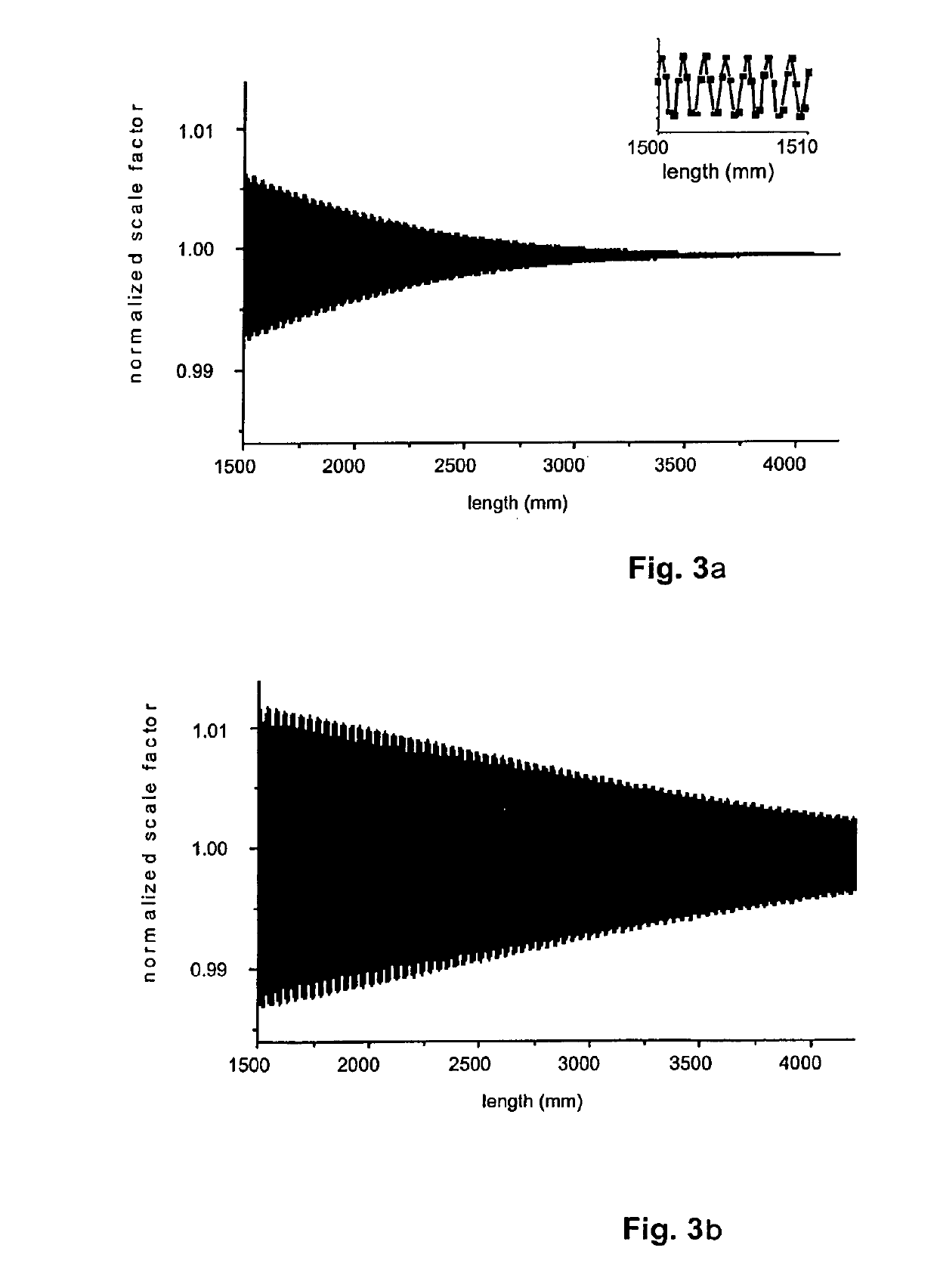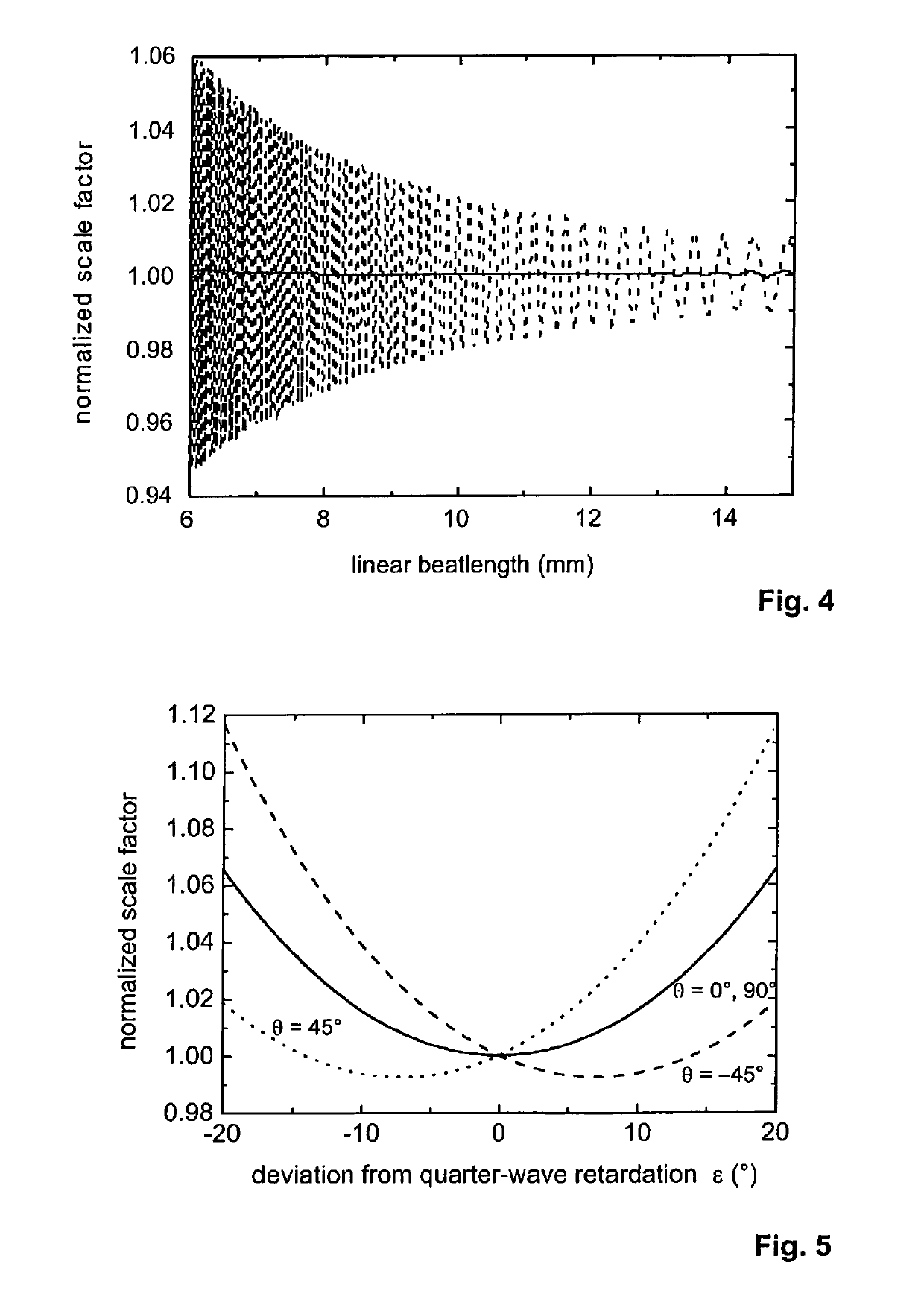Fiber-optic current sensor with spun fiber and temperature compensation
a technology of current sensor and fiber, applied in the field of fiber-optic current sensor, can solve the problems of limiting the possible number of fiber loops, inability to detect the minimum detectable current at a given detection bandwidth (measuring time), and inability to stabilize and temperature-dependent signals, etc., and achieve good temperature compensation
- Summary
- Abstract
- Description
- Claims
- Application Information
AI Technical Summary
Benefits of technology
Problems solved by technology
Method used
Image
Examples
Embodiment Construction
Definitions
[0048]In the context of the present disclosure a highly-birefringent spun fiber is defined as a fiber with embedded linear birefringence, characterized in the wavelength range of interest by an average linear beat length LLB≤200 mm, and that has been spun during the manufacturing process with a spin pitch p≤100 mm. The process freezes the twist permanently into the fiber. As a result the fiber becomes circularly birefringent.
[0049]An alternative method to generate circular birefringence is twisting a single-mode fiber along its longitudinal axis after manufacturing and holding the fiber in that position against an elastic untwisting force. The invention disclosure addresses the first type of fiber but may be adapted to the latter type, as well.
[0050]A “Faraday rotator” in the sense used herein is an optical component containing a magneto-optic material and a permanent magnet that induces a Faraday rotation of the polarization of linearly polarized light by a given non-zer...
PUM
 Login to View More
Login to View More Abstract
Description
Claims
Application Information
 Login to View More
Login to View More - R&D
- Intellectual Property
- Life Sciences
- Materials
- Tech Scout
- Unparalleled Data Quality
- Higher Quality Content
- 60% Fewer Hallucinations
Browse by: Latest US Patents, China's latest patents, Technical Efficacy Thesaurus, Application Domain, Technology Topic, Popular Technical Reports.
© 2025 PatSnap. All rights reserved.Legal|Privacy policy|Modern Slavery Act Transparency Statement|Sitemap|About US| Contact US: help@patsnap.com



